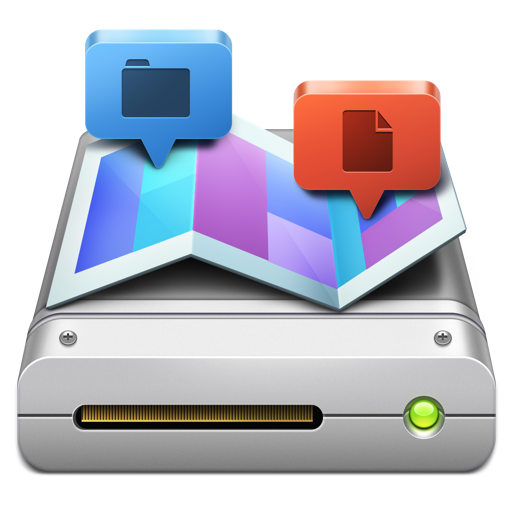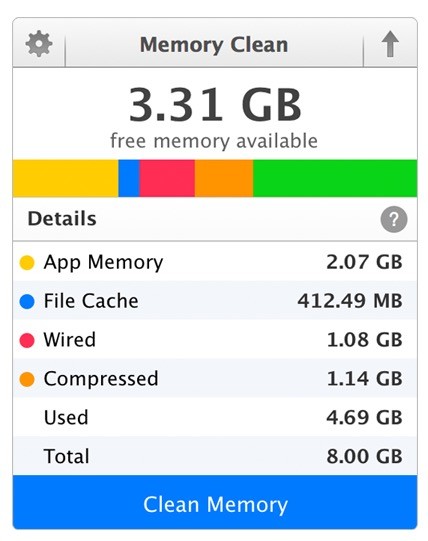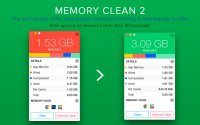Memory Cleaning. Simply click on 'Free Memory' to optimize your Mac's memory after using RAM intensive programs. Control auto cleans, threshold levels and memory info on your menu bar! Memory Clean is a tool for optimizing your Mac's memory and is best used after you have finished using a memory (RAM) intensive program or game. With the slickest interface and user experience, Memory Clean stands head and shoulders above the rest.
Trend Micro’s Dr. Cleaner vs Fiplab’s Disk Doctor and Memory Clean
Many Mac users are still guilty of magical thinking when it comes to security, saying “I’ve got a Mac! I don’t need to worry about security.” Many may also be suffering a delusion when it comes to disk or memory optimization, thinking, “I don’t worry about maintenance stuff, because the Mac automatically takes care of itself.”
Wise Mac users know that despite the basic security features built into Mac OS X, they still need a robust security program such as Trend Micro Antivirus for Mac to protect themselves against the many advanced threats aimed at them daily from email, the web, or social networks. Obviously, security is done best by security specialists.
What you may not know is how junk can accumulate on your Mac’s disk and in memory. Similarly, you may not realize that Dr. Cleaner—a combo Mac disk and memory optimization app—is available for free from Trend Micro to handle it.
Additionally, you may not know that Dr. Cleaner ranks among the top 10 free apps in some 20 countries, competing quite favorably with similar utilities, such as Fiplab’s well-known Disk Doctor (available for $2.99), which must be coupled with their free Memory Clean app to provide the same coverage as Dr. Cleaner.
Here’s how Dr. Cleaner stacks up against the Fiplab apps.
Dr. Cleaner vs. Disk Doctor
As you use your Mac over time, all kinds of unnecessary files accumulate on disk, cluttering things up and slowing things down, particularly when your disk is getting full. Both Trend Micro’s Dr. Cleaner and Fiplab’s Disk Doctor help you to remove unnecessary files, such as application and mail caches, files in your trash, application logs, and browser data.
Disk Doctor includes an option for deleting all the files in your Download folder—a bit heavy-handed, in my opinion, as who wants to delete in one fell swoop all those precious installer files? (Earlier versions of Dr. Cleaner provided this feature too, but it has been wisely removed for precisely this reason.)
Memory Clean Fiplab
Similarly, Disk Doctor will only let you delete all your files in the trash at once, while Dr. Cleaner lets you choose the files you want to delete. As a bonus, Dr. Cleaner adds a junk file cleaner for apps you uninstalled by dragging them to the trash, notifying you when they need to be cleaned.
Figure 1. Dr. Cleaner’s Junk File Notice
Dr. Cleaner also adds iTunes and iOS (iPhone, iPad) temporary file cleanup, which is absent in Disk Doctor and only to be found (at the time of this writing, as far as I know) in one other Mac utility: MacPaw’s CleanMyMac 2—available for $39.95.
Both Dr. Cleaner and Disk Doctor use simple disk scanners to scan your files, providing the pre-defined categories listed above and picklists for big files over 100 MBs, though neither permit you to select folders for deletion. To conduct your scan, both provide pre-scan summaries with used and free disk space counters (though Disk Doctor adds up the total disk size); a scan results pick-list to choose what you wish to delete; and a post-cleanup summary that provides the results.
Figure 2. Dr. Cleaner disk cleaner pre-scan
Figure 3. Disk Doctor pre-scan
Memory Clean Mac 10.6
Figure 4. Dr. Cleaner junk picklist
Figure 5. Disk Doctor junk picklist
Figure 6. Dr. Cleaner big files picklist
Figure 7. Disk Doctor large files picklist
Figure 8. Dr. Cleaner Big File Cleanup Result
Figure 9. Disk Doctor Large File Cleanup Result
In our tests, Dr. Cleaner kept pace with Disk Doctor in average clean times, though Disk Doctor found a bit more junk (10.84 GBs vs 13.20GBs respectively). The amount cleaned would shift more in Dr. Cleaner’s favor if we’d had iTunes junk on our test machine.
Dr. Cleaner vs. Memory Clean
As you load multiple apps on your Mac and work with them, Mac OS X manages the memory used for the apps quite well. It even compresses data from inactive apps when app use approaches your Mac’s maximum memory capacity. However, memory cleaners can still give your Mac a boost, by proactively compressing memory for active apps or by purging any remaining file caches or inactive memory when apps are terminated.
Both Trend Micro’s Dr. Cleaner and Fiplab’s Memory Clean optimize app memory usage, file caches, and wired and compressed memory. They show the total memory status in the menu bar (in percentages or GBs), both before and after optimization, as well as a real-time status for each type in the app drop-down window. (Dr. Cleaner gives you the total memory in use, while Memory Cleaner gives you the total free memory available).
Memory Clean also reminds you of the total memory you have in your computer, while Dr. Cleaner provides an even more useful statistic: it shows you the apps using significant memory, so you can decide if you wish to terminate them.
Figure 10. Dr. Cleaner’s memory cleaner
Figure 11. Fiplab’s Memory Clean
Memory optimization is simple in both apps. For Dr. Cleaner, you just click the optimization wheel to optimize your memory and a pinwheel spins to shows you it’s working. In Memory Clean you click the Clean Memory bar and it shows you the percentage of memory cleaned as it progresses. The amount of memory freed by both programs was comparable in our tests. However, Dr. Cleaner was three times faster than Memory Clean! (3.03 seconds vs. 9.74 seconds).
Simpler to Use vs More Geek Options
Dr. Cleaner is also a bit simpler to use, while Memory Clean provides more settings for geeks. Apart from nice-to-have but non-essential display options— including the ability to hide the window at startup, to keep the tab visible as a background app or above other apps, to show the Memory Clean icon in the dock, as well as options to set the text and size—there are several memory-specific settings in Memory Clean that are not available in Dr. Cleaner.
|
Figure 12. Fiplab’s Memory Clean General Preferences
Figure 13. Fiplab’s Memory Clean Advanced Preferences
Figure 14. Dr. Cleaner Preferences
As I mentioned, Memory Clean’s Threshold Level is definitely a geek option, since most users won’t know what a good threshold should be. Similarly, it’s probably not clear to the user when the threshold-dependent Auto Clean (a proactive compression, drawing on the Mac OS’s abilities) might actually be a deficit for the performance of active apps, since each will now operate in a smaller memory space that’s reinforced every three minutes.
By contrast, Dr. Cleaner’s proactive compression for active apps is decided by the smarts of the program, not the user, and is only executed by a manual clean. It prefers to do something not accomplished by its competitor, as far as I can tell. Dr. Cleaner automatically cleans up your memory when you close a memory-intensive app that’s greater than 2.5% of the physical memory in the machine—and a popup message informs you of that fact.

Figure 15. Dr. Cleaner Auto-Memory Optimization
With Memory Clean, you’ll need to run another manual memory clean to get the same cleanup when you close your apps.
Conclusions
In short, Dr. Cleaner does quite well against the Fiplab apps. As a two-in-one app, it’s simpler to use than Disk Doctor and Memory Clean; faster on the draw for memory cleaning; and does a decent disk optimization, while avoiding the mass-clean pitfalls you can get with Disk Doctor. Last but not least, it’s completely free! Download it from Apple’s App Store and give it a spin!
Versions reviewed:
Trend Micro:
Dr. Cleaner 1.4.1
Download Memory Clean For Mac
(Requires OS X 10.9 or later)
Fiplab:
Disk Doctor 3.2
Memory Clean 4.8
(Requires OS X 10.7.3 or later)
I work for Trend Micro and the opinions expressed here are my own.

Related posts:

